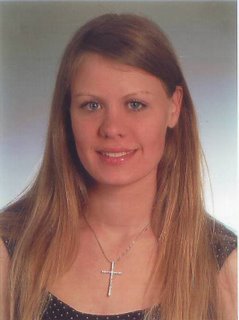Introduction to Linguistics, Session 8, Thursday, 2006-12-07
Introduction to Linguistics, Session 8, Thursday, 2006-12-07
PHONETICS: REALISING SOUNDS
Phonetics is the study of SPEECH SOUNDS!
Words, stems and morphemes are SIGNS. They are not only realised orthographically (written language), but also phonetically (spoken language). The written code (combination of letters) and the more or less corresponding oral code of a word refer to something that exists in the real world (study of semantics: signifier, signified).
THE CONCEPTUAL WORLD THE REAL WORLD
------------------......----Definition--......↔.......--Denotations
---------------------......-Example
-------------------......---Model
----------------→
---------------↓
Internal (morphology) ----↕
and external (part of
speech, valency)
Word structure
--------------↑
----------------→ ---Phonology--------- ↔ ---------Utterances
----------------------Orthography ------↔ ---------Inscriptions
THE THREE DOMAINS OF PHONETICS
The study of phonetics comprises three different branches of studies:
-ARTICULATORY PHONETICS
-ACOUSTIC PHONETICS
-AUDITOTY PHONETICS
Articulatory phonetics is about the production of speech sounds. It describes how the air that comes up from your lungs and through the glottis is influenced in the vocal tract by blocking or closing movements of an active articulator.
The formants that come out of your mouth then can be described as complex sound waves with their specific frequency (rotation of one sine wave per second, measured en Hertz), amplitude (measured in dB) and duration (time). How complex sound waves produced by human beings "travel" through the air, is analysed in acoustic phonetics.
When a sound wave reaches the ear, it has to travel trough the outer and the middle ear to the inner ear. In the ear, frequency is perceived as pitch, amplitude as loudness and duration as speech tempo.
Auditory phonetics describes the way of a complex wave through the human ear and how abstract speech sounds are decoded into neural signals that are transferred to the brain. The complex sound wave passes through the eardrum (tympanic membrane) into the middle ear, where the three tiniest bones of the human body: hammer (mallet, malleus), anvil (incus) and stirrup (stapes) transform the signal into mechanical movements.
The three bones are not only connected to each other, but also to the oval window, the passway to the inner ear. When the stimulation of the stirrup that is connected to the oval window of the inner ear reaches this passway, the basilar membrane of the cochlea is moved. This movement does also affect the two different liquids that are in the cochlea.
The movement of the liquids make the tiny hair cells of the cochlea that are arranged on the basilar membrane (Organ of Corti) move.
The hair cells do a kind of spectral analysis, which means that they split up the complex sound wave into its individual waves and transfer it into neural signals.
The snail like cochlea catches high frequencies up to 20.000 Hz at its beginning (near the oval window) and low frequencies of 20 Hz at its thin end.
How far a sound wave "travels" on the cochlea thus depends on its frequency. The neural signals are transferred to the auditory nerve and to other nerves that are connected to the brain.
Image: The ear

Abstract: The Phonetic domains, the phonetic cycle
The Articulatory Domain
The IPA: International Phonetic Alphabet is made up by the International Phonetic Association in order to provide a standard phonetic alphabet that enables people to transcribe speech sounds phonetically. The standard alphabet we are using in written language bases on spoken language, but it is still far from transcribing every single speech sound. Written language that is not ideographic (like Chinese for instance) is based on phonetic concepts, but within its long tradition and long development phase, influenced by the idea of producing logograms (a word just has to look like a specific model; also influenced by history and politics), written words do not represent phonetic concepts anymore.
IPA gives us the opportunity to represent graphically exactly what we are about to hear (narrow, phonetic transcription) and what we are normally supposed to hear (broad phonemic transcription),

Image: IPA chart; consonants

Image: IPA; vowels
ARTICULATORY PHONETICS
The articulatory organs:
We have to differentiate between passive and active articulators. Whereas the passive articulator cannot be moved, the active articulator can be moved towards an passive articulator and cause an obstruction or a restriction.
PLACE OF ARTICULATION -ACTIVE ARTICULATOR -PASSIVE ARTICULATOR
Bilabial ---------------------------upper and lower lips----------------- -
Labiodental ----------------------lower lip --------------------upper front teeth
Dental ---------------------------tongue tip -------------------upper front teeth
Alveolar -------------------------tongue tip or blade ---------.-alveolar ridge
Postalveolar --------------.-------tongue tip or blade ----------rear of alveolar ridge
Retroflex ------------------------tongue tip -------------------hard palate
Palatal -------------------------.-tongue front -----------------hard palate
Velar ----------------------------tongue back -----------------soft palate
Uvular --------------------------tongue back ------------.-----uvula
Pharyngeal ----------------------tongue root -------.----------rear wall of pharynx
Glottal ---------------------------vocal folds------------------------ -



0 Comments:
Post a Comment
<< Home